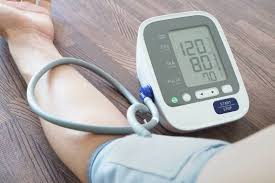Source: euroweeklynews.com
MORE and more experts now recommend that people with high blood pressure regularly check their blood pressure at home. This can give a better reflection of your blood pressure, as being tested in somewhere like a GP surgery can make you feel anxious and can affect the result. It can also allow you to monitor your condition more easily in the long term.
You can buy a variety of low-cost monitors so you can test your blood pressure at home or while you’re on the move. Doing this gives people an idea where their blood pressure stands in between doctor’s appointments and can motivate them to care more about their health. It also helps doctor’s make quick medication adjustments to keep blood pressure in a healthy zone.
However, home blood pressure monitors aren’t always as accurate as they should be.
It has been reported that home blood pressure monitors may be inaccurate in five per cent to 15 per cent of patients, depending on the threshold for accuracy used.
A study at the University of Alberta in Calgary tested dozens of home monitors used by 85 patients averaging 66 years of age.
Researchers found the units weren’t accurate within five mmHg of blood pressure about 70 per cent of the time and the devices were off the mark by at least 10 mmHg about 30 per cent of the time. Such inaccuracies could end with some people taking too much or too little blood pressure medication.
There are a number of ways to minimize inaccurate readings with the devices. Patients can compare the blood pressure machine measurement with a blood pressure measurement in a clinic before exclusively relying upon home blood pressure readings. It is also important is to do several blood pressure measurements and base treatment decisions over multiple readings.
Whatever you do, make sure you use equipment that has been properly tested. The British Hypertension Society (BHS) has information about validated blood pressure monitors you can buy.
